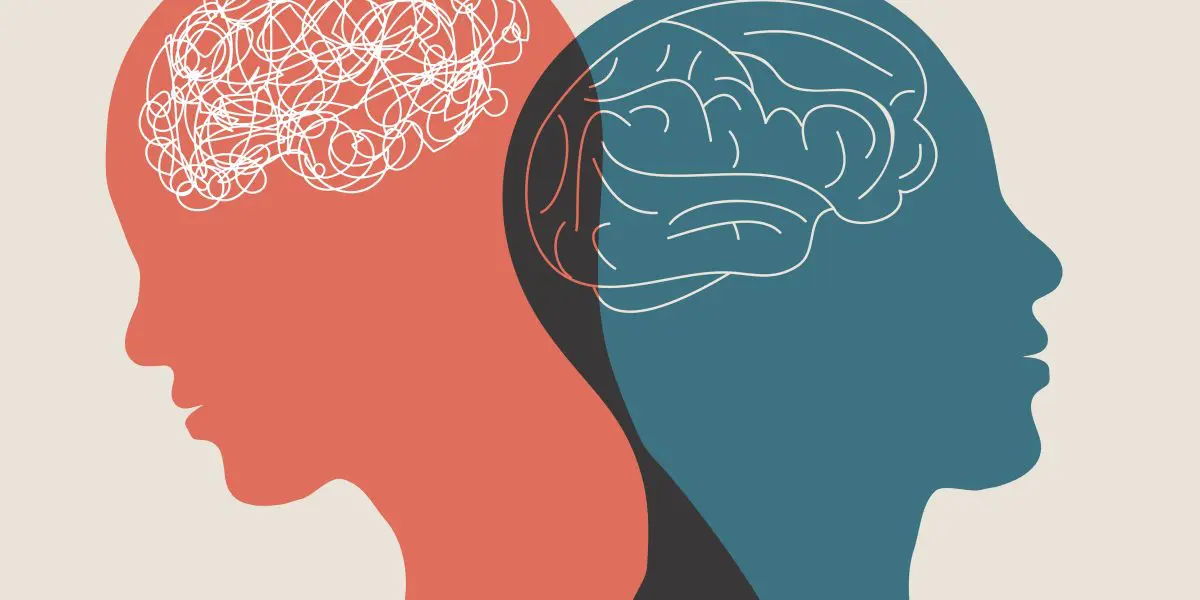
in this article
- Introduction
- History and Definitions
- Psychedelic Therapy
- Psycholytic Therapy
- Choosing Your Path: Factors to Consider
- Psycholytic Style Approach: Psycholytic Without the Therapists
- Final Thoughts
Are you 18 or older?
Please confirm that your are 18 years of age or older.
You are not allowed to access the page.

Disclaimer: The views and opinions expressed in this article are those of the authors and do not necessarily reflect the official policy or position of Chemical Collective or any associated parties.
We are halfway through 2024, and the psychedelic renaissance continues to gather steam.
Still more studies being done, still more benefits being reported. It is an exciting time for psychedelics. With the increase in interest, there is an increase in studies and clinical trials for psychedelic-assisted therapy (PAT). This is great news because it will help us further understand these long neglected molecules that can help with healing and health.
One of most utilised methods in the clinical trials for psychedelic-assisted therapy is what is called ‘psychedelic therapy’. In short, psychedelic therapy is giving people high doses of psychedelics in controlled environments, with some therapy sessions in the weeks before and after.
But what many people do not know is that there is another, lesser known method of psychedelic-assisted therapy that has also played a part in the resurgence. It uses lower doses and more frequent sessions, and it is called psycholytic therapy.
So what is psycholytic therapy? How does it differ from psychedelic therapy? And does it have anything to teach us that we can use outside of the therapy room?
In this blog post I will be answering all of these questions. I will be looking at both psychedelic and psycholytic therapy, the origins of both, what defines each method, and offering a full side by side look. I will also offer my thoughts on what the psycholytic approach might offer to those of us utilising psychedelics outside of a therapy or research setting.
Before going into the differences between psychedelic therapy and psycholytic therapy, it will be informative to look at the origins of each of these words. This will help to distinguish the difference between the two therapy approaches before we go further.
The word ‘psychedelic’ literally translates to “mind-manifesting” from the Greek words “psyche” (soul or mind) and “delein” (to manifest).
The word was first coined by the British psychiatrist Humphry Osmond in 1956. It was used in his correspondence with the intellectual and fellow Brit Aldous Huxley where Osmond famously wrote: ‘to fathom hell or soar angelic, just take a pinch of psychedelic’.
Osmond came up with this term in reference to the more intense subjective effects provided by psychedelic substances. This was an unveiling of the deeper layers of one’s psyche, as well as altered perceptions, thought patterns, and emotions, often leading to intense and sometimes mystical experiences. These effects, although possible with lower doses, tend to come more commonly with higher doses.
The word ‘psycholytic’ was first used by Ronald A. Sandison in a speech at the 1960 ‘European Symposium on Psychotherapy Under LSD-25’ at Göttingen University. It was used in introducing a model of therapy which Sandison called ‘psycholytic therapy’.
Psycholytic literally translates to “soul-dissolving” from the Greek words “psyche” (soul) and “lyein” (to loosen or dissolve). The term psycholytic refers to the belief that the therapy can dissolve conflicts in the mind.
As we can see, the origin of the term ‘psychedelic’ is derived from the effects of more intense experiences that would more frequently be brought about by higher doses of psychedelic substances.
The origin of the word ‘psycholytic’ is in reference to a specific type of therapy. Rather than describing the effects of a high dose of a psychedelic substance, the name refers to the dissolution of conflicts in the mind brought about by that specific therapy.
This differentiation shows a key difference in the approach and attitude of psychedelic therapy and psycholytic therapy. Both use psychedelic substances, with the aim of a therapeutic outcome, but in very different ways.
Let us now take full side by side look at what makes up each.

Whilst the name ‘psychedelic therapy’ may lead us to believe that psychedelic therapy refers to any type of therapy using psychedelics, it is actually a specific kind.
Utilising high doses, the main goals of psychedelic therapy are breakthrough experiences and ego-dissolution in the psychedelic session. It is aimed to radically break down a person’s personality structure, so that it can be rebuilt afterwards.
Psychedelic therapy sessions therefore involve a unique structure designed to facilitate a profound and transformative experience. Let us take a look at the key aspects.
The sessions take place in a safe and controlled indoor environment, often with comfortable furniture, calming visuals, and carefully curated music. The goal is to create a supportive atmosphere conducive to introspection and emotional release.
In psychedelic therapy sessions, patients spend most of the acute period of the drug’s activity lying down and listening to music, often through headphones. The music is selected beforehand and is intended to influence and guide the experience. With eyeshades on, patients are encouraged to explore their inner experience. The therapeutic team normally consists of a man and a woman, who are both present throughout the psychedelic experience.
Psychedelic therapy utilises high doses of the substance, aiming to induce a powerful altered state of consciousness. Patients may experience intense emotions, vivid imagery, and a sense of ego-dissolution (a temporary loosening of one’s sense of self).
One aspect that occurs in many people undergoing psychedelic therapy is transcendental, mystical, or peak experiences. Research has suggested that the strength of these experiences, together with discussion of them soon after in a therapeutic session, could be a major determinant of how great the longer-term effects or positive symptoms will be.
Therapists in psychedelic therapy act as facilitators rather than typical talk therapists. In general, verbal communication between the therapist and the participant having the experience is minimal. The focus remains on the patient’s internal exploration. Therapists are there to provide a safe space, offer reassurance, and may offer words of encouragement or grounding techniques to help navigate the intensity of the experience. In the case of emotions like sadness, they may offer support via physical presence and touch, like a hug or a hand to hold.
While dialogue with the therapist is typically minimal during the peak of the psychedelic experience, it can be helpful in the beginning and ending phases of the session.
Psychedelic therapy extends beyond the single high-dose session. Although dialogue with the therapists during the drug sessions is minimal, it is a key part of the preparation and integration sessions, which take place without use of any psychedelic substances.
Preparation sessions, typically occurring in the weeks leading up to the high dose session, look more like traditional talk therapy and may explore biographical content. They also involve exploring intentions, setting goals, and educating the patient about the potential effects of the substance.
Integration sessions, held in the days and weeks following the experience, are crucial for processing the insights and integrating them into the patient’s life. These sessions provide a space to make sense of the emotions and experiences that may have surfaced during the high dose session.
Psychedelic therapy typically involves fewer sessions compared to traditional talk therapy. Due to the intensity of the high-dose experience, sessions are often spaced out by weeks or even months. This is why there is a focus on the integration process, as it helps patients process the insights and experiences from the psychedelic session with the aim of lasting change.

Unlike psychedelic therapy which utilises high doses and aims for a transformative experience, psycholytic therapy uses low doses of psychedelic substances to facilitate psychotherapy. The goal is not necessarily a mind-blowing experience, but instead to gently loosen defences and unlock repressed memories or emotional blocks that can be explored with the therapist.
Let us take a look at the typical format.
The sessions usually take place in a typical therapist’s room, similar to psychedelic therapy; a safe and controlled indoor environment with comfortable furniture. One key difference here is that the patient will not be wearing eye shades, and there will not typically be any music. If there is, it will be used as a backdrop for therapy, rather than a key factor which drives the experience. No headphones will be used either, as the patient will need to talk and engage with the therapist.
Psycholytic therapy employs lower doses of the psychedelic substance compared to psychedelic therapy. This allows patients to maintain a level of awareness and engage in dialogue with the therapist throughout the session.
A conscious sliver of the adult ego usually remains active during the experience. This allows patients to remain intellectually alert throughout the process and remember their experiences vividly afterward. In a highly introspective state, patients may become actively aware of ego defences such as projection, denial, and displacement as they react to themselves and their therapist’s questions.
The goal of psycholytic therapy is to provide a safe and compassionate context through which the profound and intense reliving of memories coupled with new perspectives can be filtered through the principles of psychotherapy. Aided by the deepened introspective state attained by the patient through the use of psychedelics, the therapist assists him or her in developing a new life framework or personal philosophy.
Psycholytic therapy is designed to work in conjunction with traditional talk therapy. The sessions aim to uncover and explore repressed material that can then be further processed and integrated during regular therapy sessions.
Therefore, the therapist plays a more active role in psycholytic therapy sessions. They guide the exploration of the patient’s experience primarily through dialogue. Their words and questions prompt reflection and help to connect emerging emotions or memories to past experiences, and to find new perspectives.
The slower and steadier approach of psycholytic therapy allows for a more gradual exploration of repressed or subconscious material. Insights gained during the psycholytic session can be further explored and processed during subsequent talk therapy and psycholytic sessions.
Similar to psychedelic therapy, integration sessions may be a part of psycholytic therapy as well. They also occur after the psycholytic session, and allow the patient and therapist to delve deeper into the insights gained from the experience and explore their potential implications for ongoing therapy and personal growth. However, focused integration sessions play less of an important role in psycholytic therapy as it incorporates the psychedelic experience within the framework of ongoing talk therapy.
This, as well as the lower doses (and less intense experiences) means that psychedelic sessions may occur more frequently, with the psycholytic sessions integrated into an established therapeutic relationship.
If you are considering a form of psychedelic assisted-therapy, here are some factors to consider to help you decide between psychedelic therapy and psycholytic therapy:
If any of these apply, the psychedelic therapy approach might be a better fit for you.
If you answer yes to these, the psycholytic therapy approach could be a better choice for you.
Consulting with a professional experienced with psychedelics can be helpful for you to make a decision. They can assess your individual needs and recommend the most suitable approach for your specific situation.
If you are more interested in psycholytic therapy, there may be some things that you can take from the approach, even if you are not in therapy.
The low dose and more frequent sessions offered by the psycholytic approach may still be utilised by those of us using psychedelics in other contexts for wellbeing, personal growth and therapeutic outcome.
This can be done, for example, by replacing therapy sessions with other activities which, like therapy, can increase awareness of self, memories and mind, improve mental health, and have therapeutic benefits. These may include journaling, time in nature, meditation, and talking with loved ones.
The low to medium doses of psychedelics can help to boost the beneficial processes and mechanisms of these activities, much like they do with traditional talk therapy.
If aiming to process and get new perspectives on previous difficult experiences, you may try activities that will guide your attention there, such as journaling and conversation. Journaling prompts may be set up to explore and relive repressed memories, or these issues might be talked through with a compassionate friend who is good at listening.
That said, this approach should be taken with caution, and the type of people and conversations you have should be considered carefully beforehand, as psychedelics can amplify emotions and put people in potentially uncomfortable situations.
Psychedelic and psycholytic therapy offer distinct approaches to psychedelic mental health treatment. Psychedelic therapy focuses on transformative experiences and ego-dissolution for lasting change, whilst psycholytic therapy enhances traditional talk therapy by facilitating the exploration of hidden emotional blocks and repressed memories.
If you are considering a form of psychedelic-assisted therapy yourself, or just utilising psychedelics for your own emotional and mental health, understanding the differences and your own unique needs is an important first step. I hope this article has helped shed some light on these approaches and what they can each offer.
Stay safe, journey well.
John Robertson | Community Blogger at Chemical Collective | mapsofthemind.com
John is one of our community bloggers here at Chemical Collective. If you’re interested in joining our blogging team and getting paid to write about subjects you’re passionate about, please reach out to David via email at blog@chemical-collective.com
Welcome to Chemical Collective.
Create an account to earn 200 welcome points.
Already have an account? Sign in
Check out our Community Blog and get involved with the conversation. You will be awarded 50 x ChemCoins for each comment up to a limit of 250 total ChemCoins.
Have you purchased any of our products? Reviews and reports are so important to the community. Share your honest opinion, and we’ll reward you with 50 ChemCoins for each review!
Every time you complete an order with us, you’ll be awarded ChemCoins for each Euro spent.
Welcome to Chemical Collective.
Create an account to earn 200 welcome points.
Already have an account? Sign in
Earn commission every time someone makes a purchase through your link.
When you become an affiliate, you will be allocated a unique link to share with your friends, followers, subscribers, or Aunt Susan.
You can choose to payout the commission earned once per month, or save it up to receive on a rainy day! Commission earned is 5% of the total order value per referral.
Contact us to join the Chemical Collective family and become an affiliate.
share your toughts
Join the Conversation.
Great articles John ! I did one on the same subject in French here in CC and I’m happy that you’re bringing new things to my knowledge.
Have a nice day, Nuit